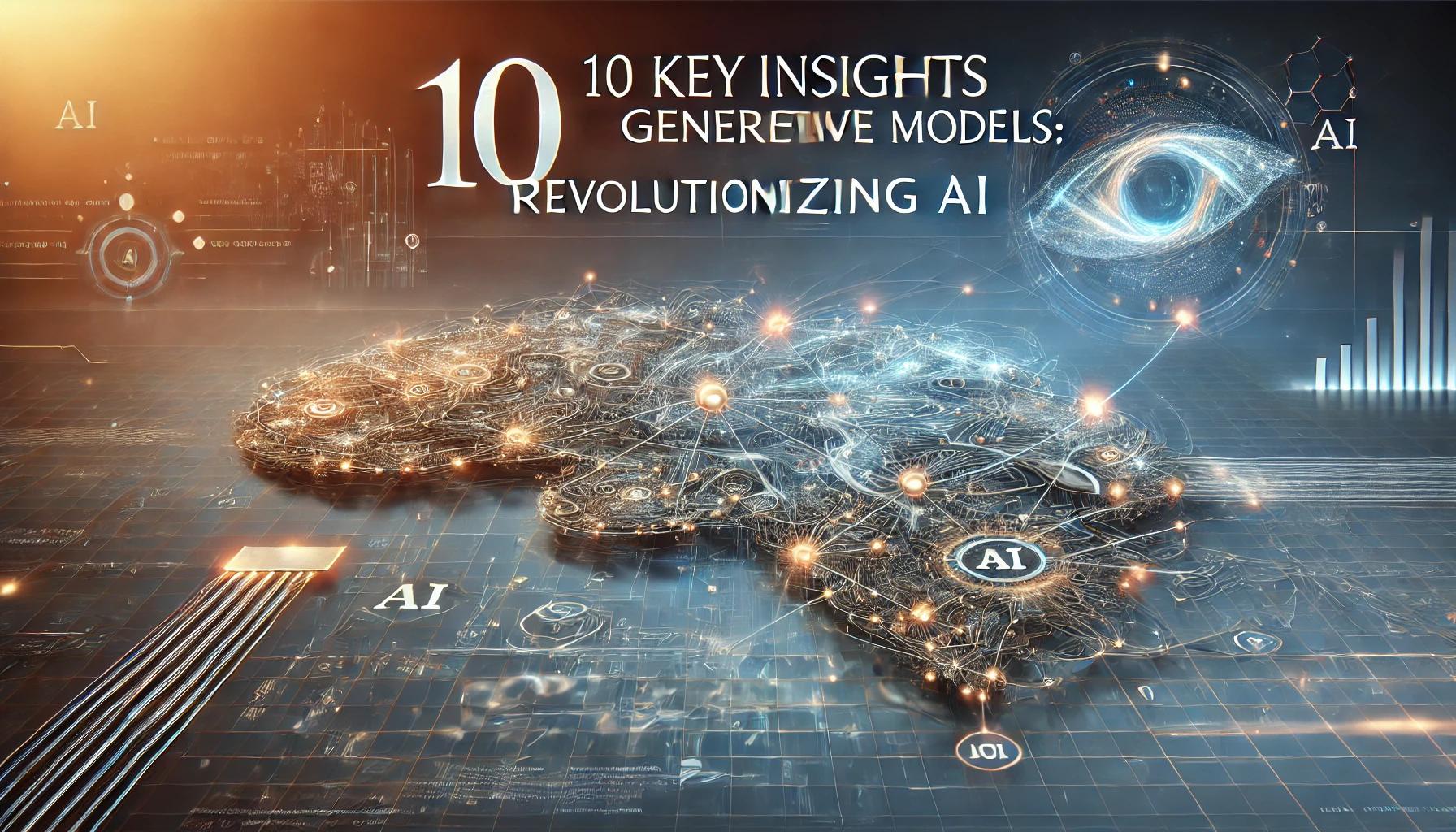Chapters
10 Key Insights into Generative Models: Revolutionizing AI

Overview
Introduction
In the rapidly evolving field of artificial intelligence, generative models have emerged as a groundbreaking technology. These models, capable of generating new data that mimics the patterns and structures of existing data, are transforming various industries, from healthcare to entertainment. In this article, we delve into the world of generative models, exploring their workings, applications, and future prospects. By the end, you’ll have a comprehensive understanding of how generative models are revolutionizing AI.
What are Generative Models?
Generative model are a class of machine learning algorithms designed to create new data samples that resemble a given set of data. Unlike discriminative models, which focus on distinguishing between different classes of data, generative models learn the underlying distribution of the data and generate new instances that could plausibly belong to the same distribution. This ability makes generative models incredibly powerful for tasks such as image synthesis, text generation, and even drug discovery.
How Do Generative Models Work?
Generative models operate by learning the probability distribution of a dataset. They achieve this through various techniques, including probabilistic graphical models, neural networks, and adversarial training. One of the most popular types of generative models is the Generative Adversarial Network (GAN). GANs consist of two neural networks, a generator and a discriminator, that are trained simultaneously. The generator creates fake data, while the discriminator evaluates its authenticity, leading to the generation of highly realistic data over time.
Types of Generative Models
There are several types of generative models, each with unique characteristics and applications:
- Autoregressive Models: These models generate data one element at a time, with each element conditioned on the previous ones. Examples include PixelRNN and WaveNet.
- Variational Autoencoders (VAEs): VAEs encode data into a latent space and then decode it back into the original space, allowing for the generation of new data samples.
- Generative Adversarial Networks (GANs): GANs pit two neural networks against each other to generate highly realistic data.
- Normalizing Flows: These models transform simple distributions into complex ones, providing exact likelihood computation and generation.
Applications of Generative Models
Generative models have a wide range of applications across various industries:
- Healthcare: In drug discovery, generative models can create new molecular structures with desired properties.
- Entertainment: In the gaming and movie industries, these models can generate realistic characters and scenes.
- Fashion: Designers use generative model to create innovative designs and patterns.
- Finance: Generative model can simulate market conditions and generate synthetic data for algorithmic trading.
Benefits of Using Generative Models
The use of generative model offers several benefits:
- Data Augmentation: Generative model can create additional training data, improving the performance of machine learning models.
- Creativity: These models enable the creation of new and unique content, fostering innovation.
- Efficiency: Generative model can automate complex processes, saving time and resources.
- Personalization: They can generate personalized content, enhancing user experiences.
Challenges Facing Generative Models
Despite their potential, generative model face several challenges:
- Training Stability: Training generative model, especially GANs, can be unstable and requires careful tuning.
- Quality Control: Ensuring the quality of generated data can be difficult, as models might produce artifacts or unrealistic samples.
- Computational Resources: Generative model often require significant computational power, making them inaccessible for some applications.
How Generative Models are Transforming Industries
Generative model are making a significant impact across various sectors:
- Healthcare: By generating realistic medical images, generative models assist in diagnosis and treatment planning.
- Marketing: These models create personalized marketing content, improving engagement and conversion rates.
- Art and Design: Artists and designers use generative models to explore new creative possibilities and automate routine tasks.
- Education: Generative model can produce customized educational materials, catering to individual learning needs.
Future of Generative Models in AI
The future of generative model in AI looks promising, with continuous advancements expected in the coming years. Researchers are working on improving the stability and quality of these models, making them more accessible and efficient. As computational power increases, we can expect generative model to play an even more significant role in various applications, from creative industries to scientific research.
Conclusion
Generative model represent a significant leap forward in the field of artificial intelligence. Their ability to create realistic and innovative data has far-reaching implications across numerous industries. As we continue to explore and refine these models, their impact on technology and society will undoubtedly grow, ushering in a new era of AI-driven innovation.
10 FAQs on Generative Model
- What are generative model?
- Generative model are machine learning algorithms designed to generate new data that mimics the patterns of existing data.
- How do generative model work?
- They learn the probability distribution of a dataset and generate new instances that could belong to the same distribution.
- What are the types of generative model?
- Types include Autoregressive Models, Variational Autoencoders (VAEs), Generative Adversarial Networks (GANs), and Normalizing Flows.
- What are the applications of generative model?
- Applications include healthcare, entertainment, fashion, and finance.
- How are generative model different from discriminative models?
- Discriminative models distinguish between classes of data, while generative model create new data samples.
- What is a Generative Adversarial Network (GAN)?
- A GAN consists of a generator and a discriminator network that compete to generate realistic data.
- What are the benefits of using generative model?
- Benefits include data augmentation, creativity, efficiency, and personalization.
- What challenges do generative model face?
- Challenges include training stability, quality control, and high computational resource requirements.
- How are generative models transforming industries?
- They are making significant impacts in healthcare, marketing, art and design, and education.
- What is the future of generative models in AI?
- The future is promising, with ongoing research improving their stability, quality, and accessibility, leading to broader applications.
Tutorials are for educational purposes only, with no guarantees of comprehensiveness or error-free content; TuteeHUB disclaims liability for outcomes from reliance on the materials, recommending verification with official sources for critical applications.
Similar Tutorials

Advanced Excel Charts Tutorial: How to Create Prof...
Learn how to create professional charts in Excel with our advanced Excel charts tutorial. We'll show...

Advanced Excel Functions: Tips and Tricks for Boos...
Are you tired of spending hours working on Excel spreadsheets, only to find yourself stuck on a prob...

Apache Flume Tutorial: An Introduction to Log Coll...
Apache Flume is a powerful tool for collecting, aggregating, and moving large amounts of log data fr...
Explore Other Libraries
Related Searches
Please allow ads on our site
Kindly log in to use this feature. We’ll take you to the login page automatically.
Login
Join Our Community Today
Ready to take your education and career to the next level? Register today and join our growing community of learners and professionals.

Your experience on this site will be improved by allowing cookies. Read Cookie Policy
Your experience on this site will be improved by allowing cookies. Read Cookie Policy



Comments(0)